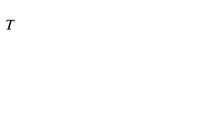Abstract
Lift-and-project cuts can be obtained by defining an elegant optimization problem over the space of valid inequalities, the cut generating linear program (CGLP). A CGLP has two main ingredients: (i) an objective function, which invariably maximizes the violation with respect to a fractional solution \({\bar{x}}\) to be separated; and (ii) a normalization constraint, which limits the scale in which cuts are represented. One would expect that CGLP optima entail the best cuts, but the normalization may distort how cuts are compared, and the cutting plane may not be a supporting hyperplane with respect to the closure of valid inequalities from the CGLP. This work proposes the reverse polar CGLP (RP-CGLP), which switches the roles conventionally played by objective and normalization: violation with respect to \({\bar{x}}\) is fixed to a positive constant, whereas we minimize the slack for a point p that cannot be separated by the valid inequalities. Cuts from RP-CGLP optima define supporting hyperplanes of the immediate closure. When that closure is full-dimensional, the face defined by the cut lays on facets first intersected by a ray from \({\bar{x}}\) to p, all of which corresponding to cutting planes from RP-CGLP optima if p is an interior point. In fact, these are the cuts minimizing a ratio between the slack for p and the violation for \({\bar{x}}\). We show how to derive such cuts directly from the simplex tableau in the case of split disjunctions and report experiments on adapting the CglLandP cut generator library for the RP-CGLP formulation.
Similar content being viewed by others
Notes
A poster with the results that we prove up to this point in the paper was presented on May 2016 at the MIP Workshop (https://sites.google.com/site/mipworkshop2016/posters), which was almost simultaneous with their presentation at the CORE@50 Conference.
miplib.zib.de
References
Applegate, D. L., Bixby, R. E., Chvátal, V., & Cook, W. J. (2006). The traveling salesman problem: A computational study (2nd ed.). Princeton: Princeton University Press.
Balas, E. (1997). A modified lift-and-project procedure. Mathematical Programming, 79(1–3), 19–31.
Balas, E. (1998). Disjunctive programming: Properties of the convex hull of feasible points. Discrete Applied Mathematics, 89(1–3), 3–44.
Balas, E., & Bonami, P. (2009). Generating lift-and-project cuts from the lp simplex tableau: open source implementation and testing of new variants. Mathematical Programming Computation, 1(2–3), 165–199.
Balas, E., & Perregaard, M. (2002). Lift-and-project for mixed 0–1 programming: Recent progress. Discrete Applied Mathematics, 123, 129–154.
Balas, E., & Perregaard, M. (2003). A precise correspondence between lift-and-project cuts, simple disjunctive cuts, and mixed integer gomory cuts for 0–1 programming. Mathematical Programming, Series B, 94, 221–245.
Balas, E., & Serra, T. (2019). When lift-and-project cuts are different. INFORMS Journal on Computing (to appear)
Balas, E., Ceria, S., & Cornuéjols, G. (1993). A lift-and-project cutting plane algorithm for mixed 0–1 programs. Mathematical Programming, 58, 295–324.
Balas, E., Ceria, S., & Cornuéjols, G. (1996). Mixed 0–1 programming by lift-and-project in a branch-and-cut framework. Management Science, 42, 1229–1246.
Ben-Ameur, W., & Neto, J. (2007). Acceleration of cutting-plane and column generation algorithms: Applications to network design. Networks, 49(1), 3–17.
Bonami, P. (2012). On optimizing over lift-and-project closures. Mathematical Programming Computation, 4, 151–179.
Borwein, J., & Wolkowicz, H. (1981). Regularizing the abstract convex program. Journal of Mathematical Analysis and Applications, 83(2), 495–530.
Buchheim, C., Liers, F., & Oswald, M. (2008). Local cuts revisited. Operations Research Letters, 36, 430–433.
Buchheim, C., Liers, F., & Oswald, M. (2010). Speeding up IP-based algorithms for constrained quadratic 0–1 optimization. Mathematical Programming, Series B, 124, 513–535.
Buchheim, C., Liers, F., & Sanità, L. (2011). An exact algorithm for robust network design. Proceedings of INOC, 2011, 7–17.
Cadoux, F. (2010). Computing deep facet-defining disjunctive cuts for mixed-integer programming. Mathematical Programming, 122(2), 197–223.
Cadoux, F., & Lemaréchal, C. (2013). Reflections on generating (disjunctive) cuts. The EURO Journal on Computational Optimization, 1(1–2), 51–69.
Ceria, S., & Soares, J. (1997). Disjunctive cuts for mixed-programming: Duality and lifting. Columbia: Columbia University.
Conforti, M., Wolsey, L.A. (2016). “Facet” separation with one linear program. CORE DISCUSSION PAPER (2016/16).
Fischetti, M., & Salvagnin, D. (2010). An in-out approach to disjunctive optimization. Proceedings of CPAIOR, 2010, 136–140.
Fischetti, M., Lodi, A., & Tramontani, A. (2011). On the separation of disjunctive cuts. Mathematical Programming A, 128, 205–230.
Kronqvist, J., Lundell, A., & Westerlund, T. (2016). The extended supporting hyperplane algorithm for convex mixed-integer nonlinear programming. The Journal of Global Optimization, 64, 249–272.
Louveaux, Q., Poirrier, L., & Salvagnin, D. (2015). The strength of multi-row models. Mathematical Programming Computation, 7(2), 113–148.
Tjandraatmadja, C., van Hoeve, W. J. (2016). Target cuts from relaxed decision diagrams (Submitted)
Veinott, A. J. (1967). The supporting hyperplane method for unimodal programming. Operations Research, 15(1), 147–152.
Acknowledgements
The author would like to thank Christian Tjandraatmadja for his invaluable feedback and suggestions on the topic of this paper.
Author information
Authors and Affiliations
Corresponding author
Additional information
Publisher's Note
Springer Nature remains neutral with regard to jurisdictional claims in published maps and institutional affiliations.
Rights and permissions
About this article
Cite this article
Serra, T. Reformulating the disjunctive cut generating linear program. Ann Oper Res 295, 363–384 (2020). https://doi.org/10.1007/s10479-020-03709-2
Published:
Issue Date:
DOI: https://doi.org/10.1007/s10479-020-03709-2




